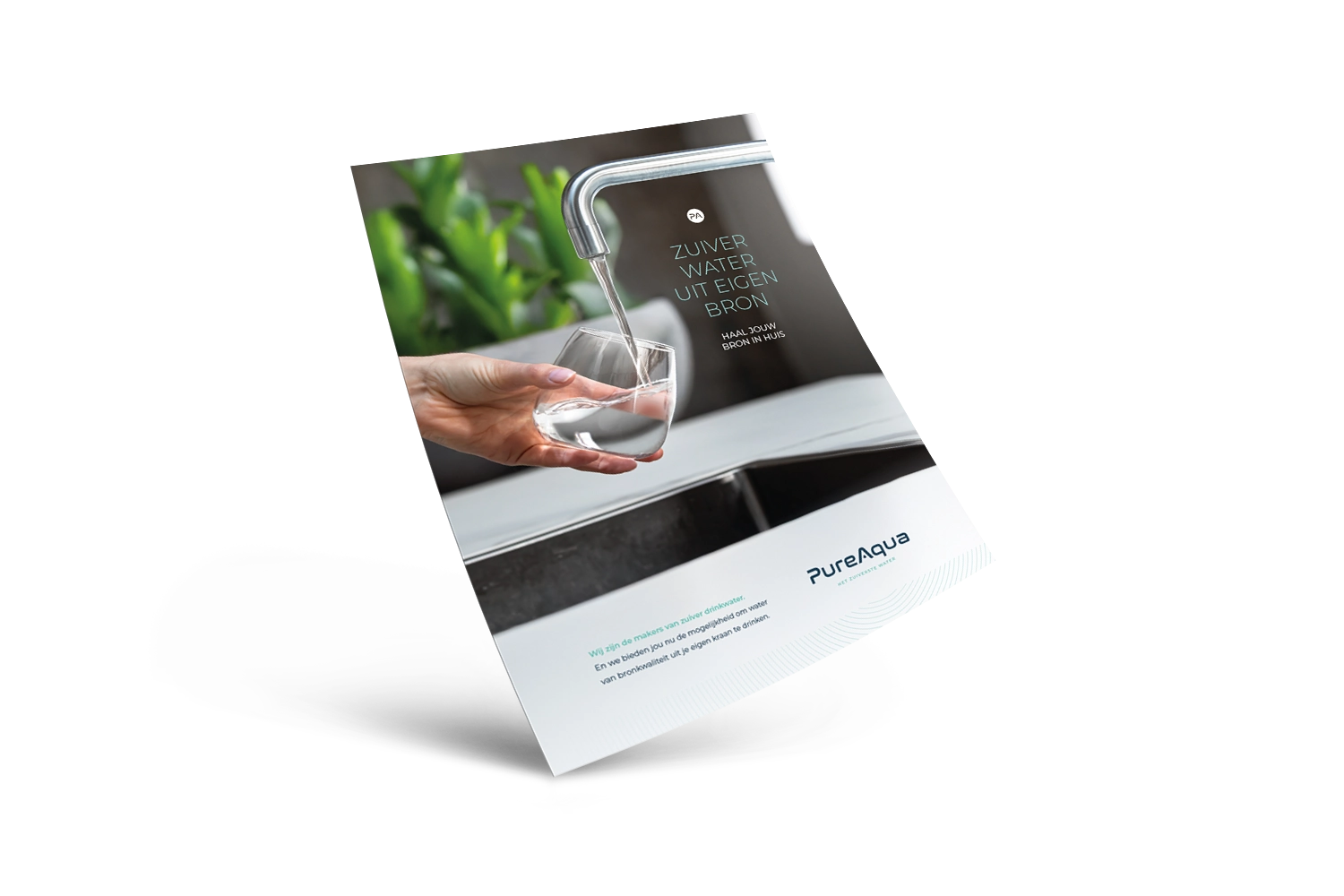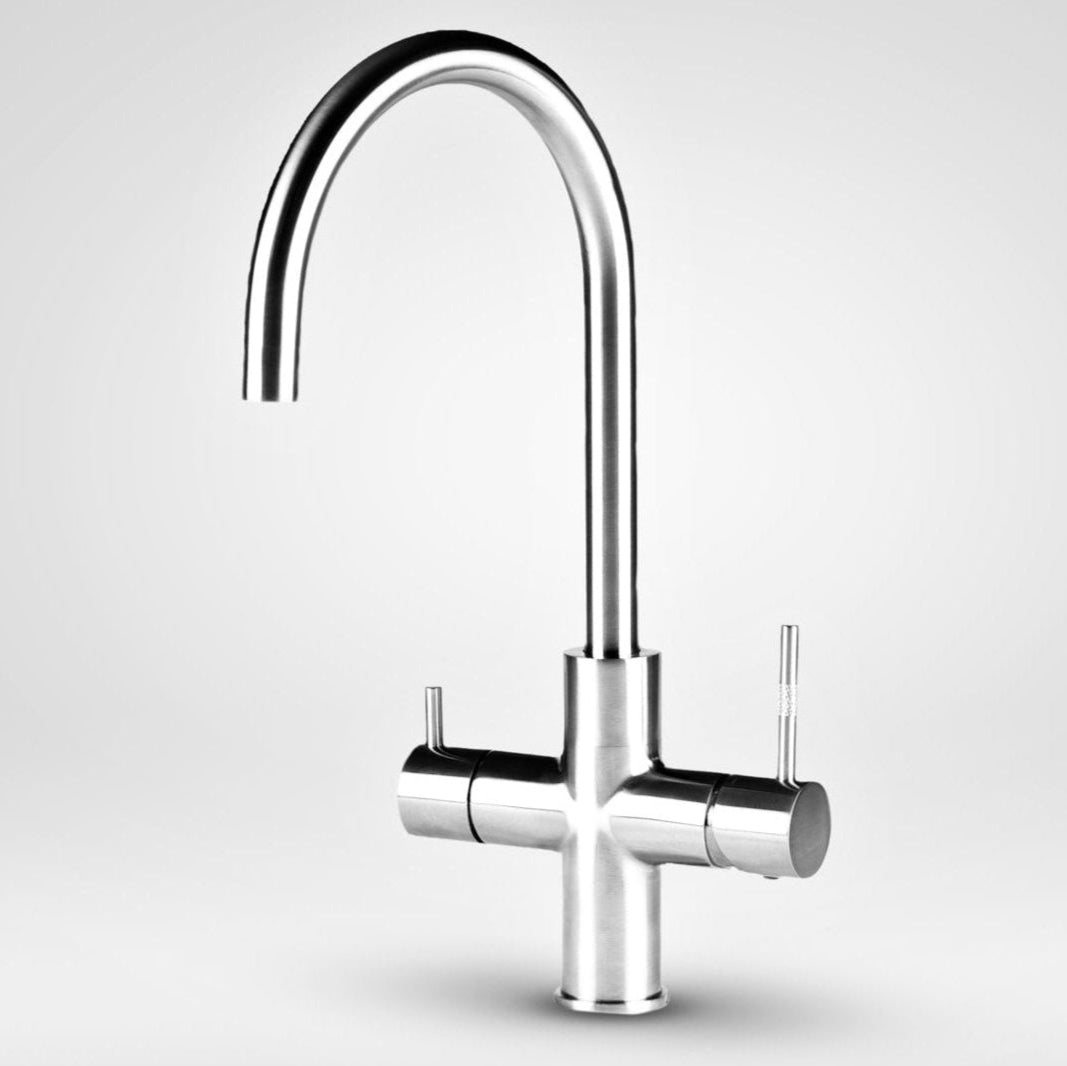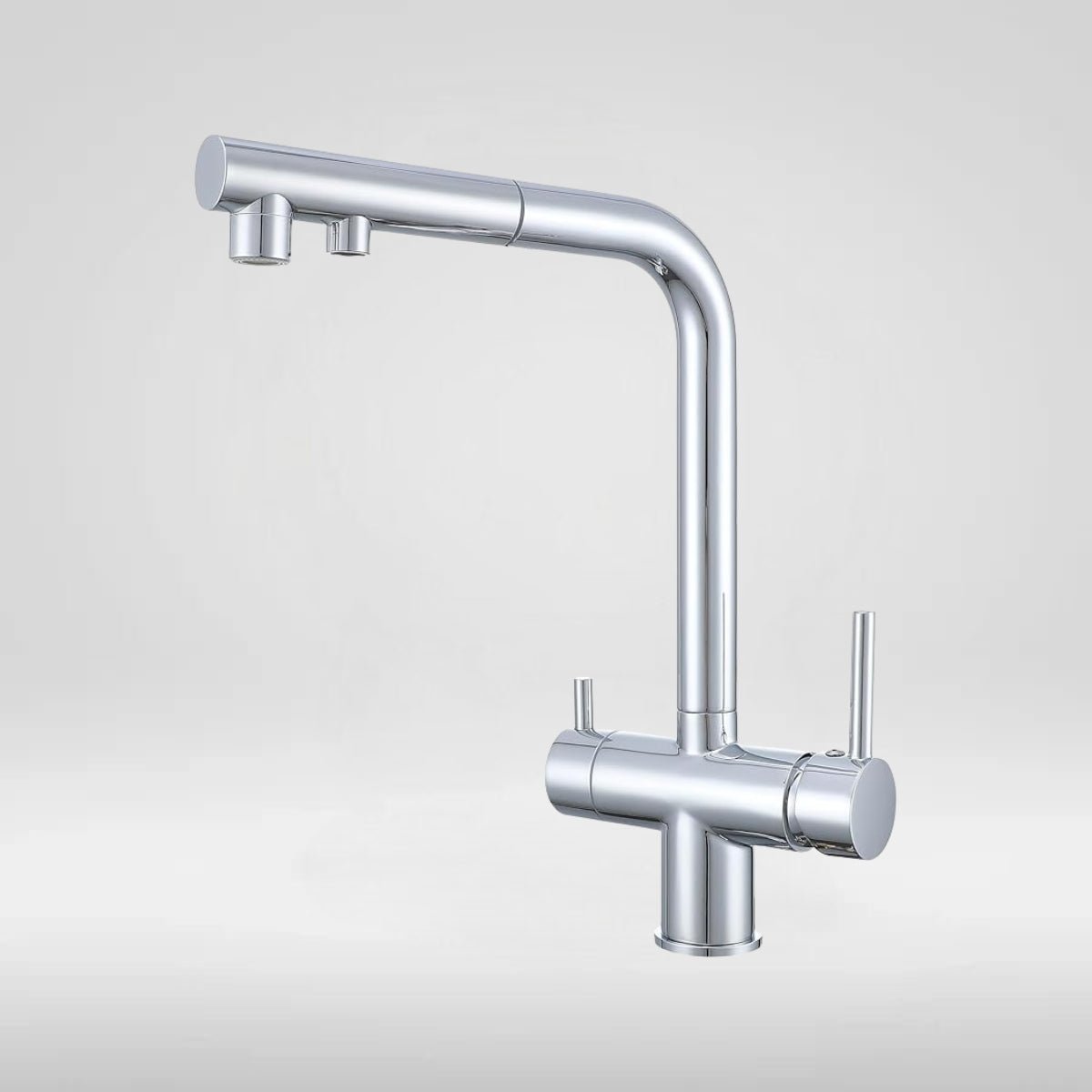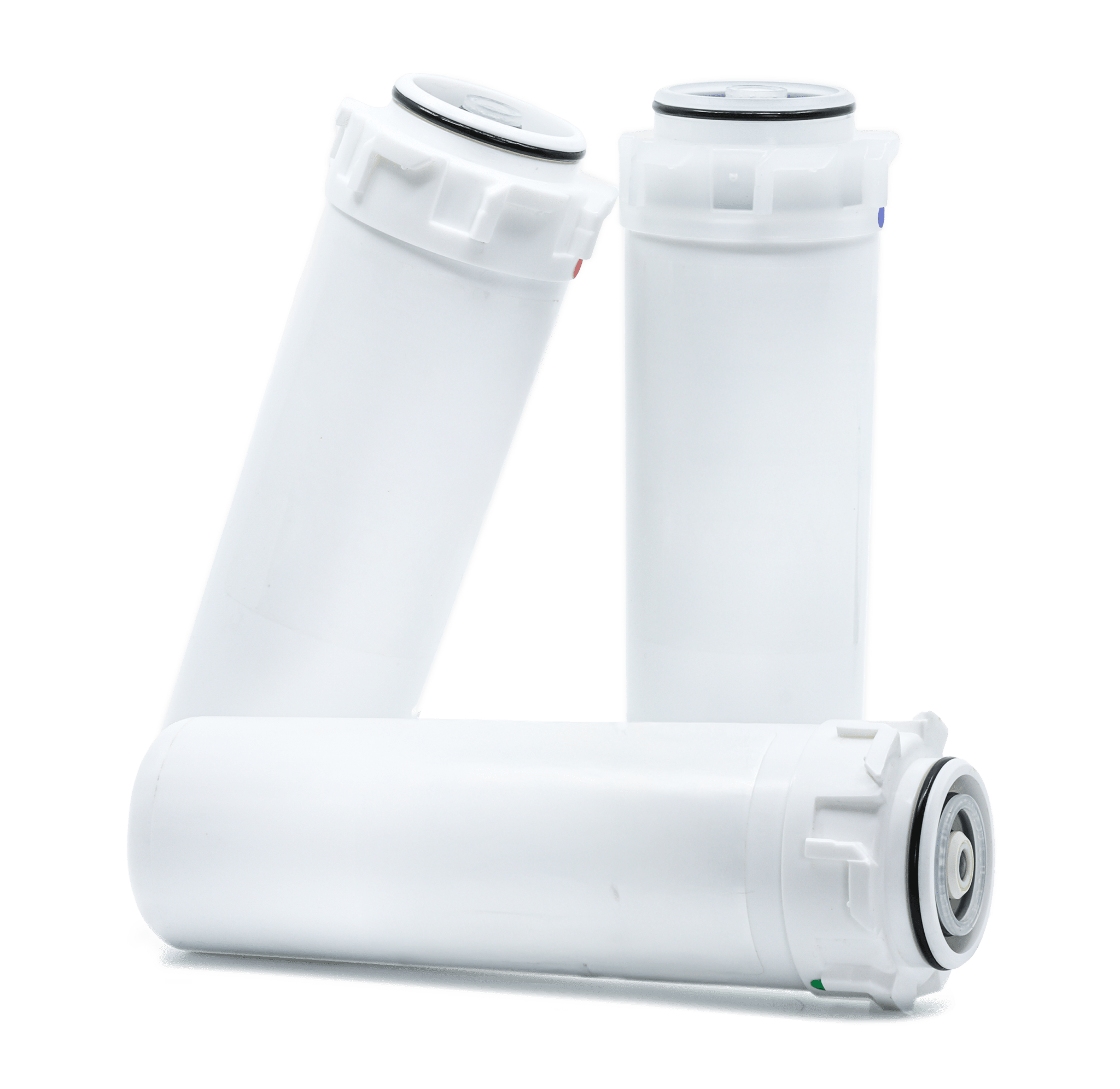
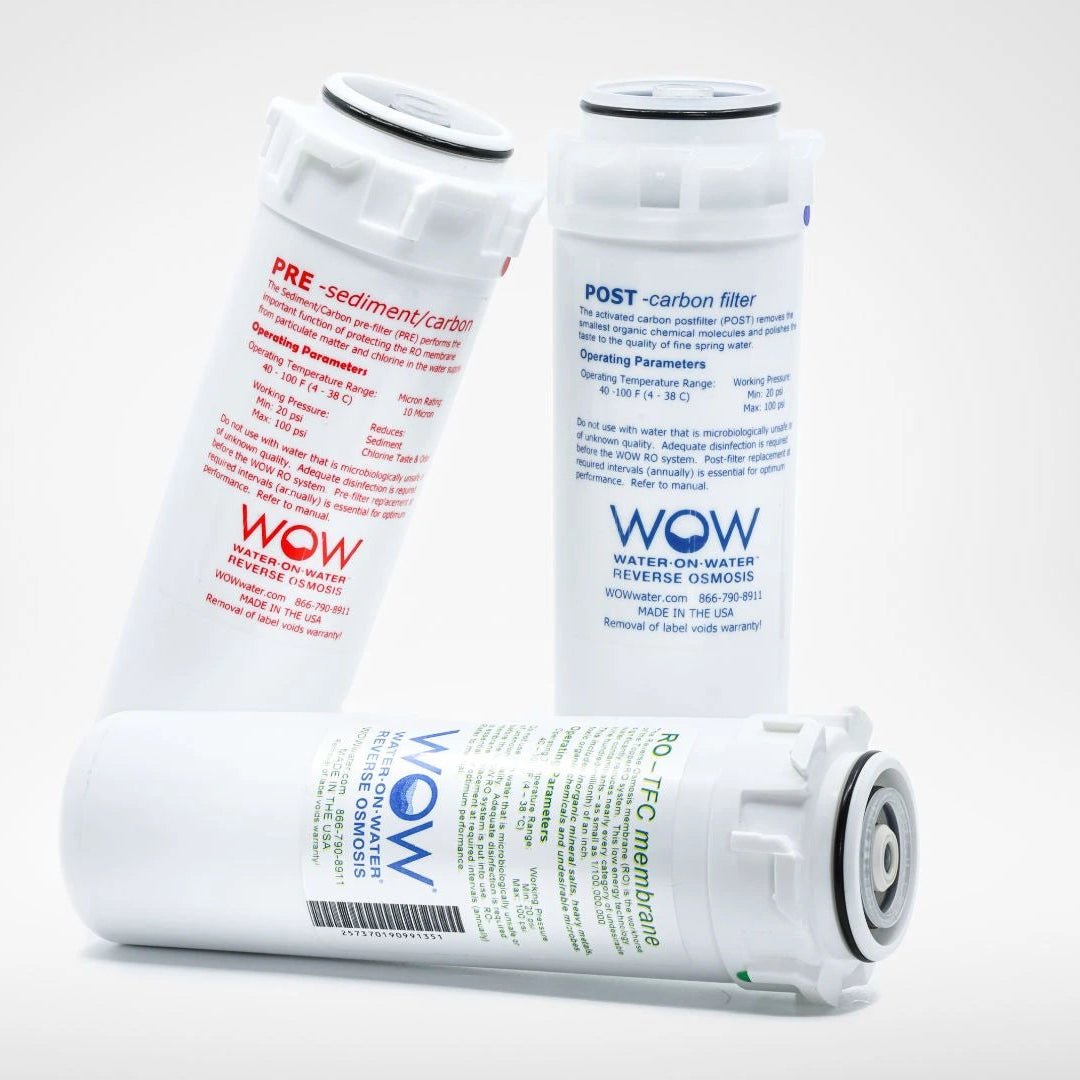

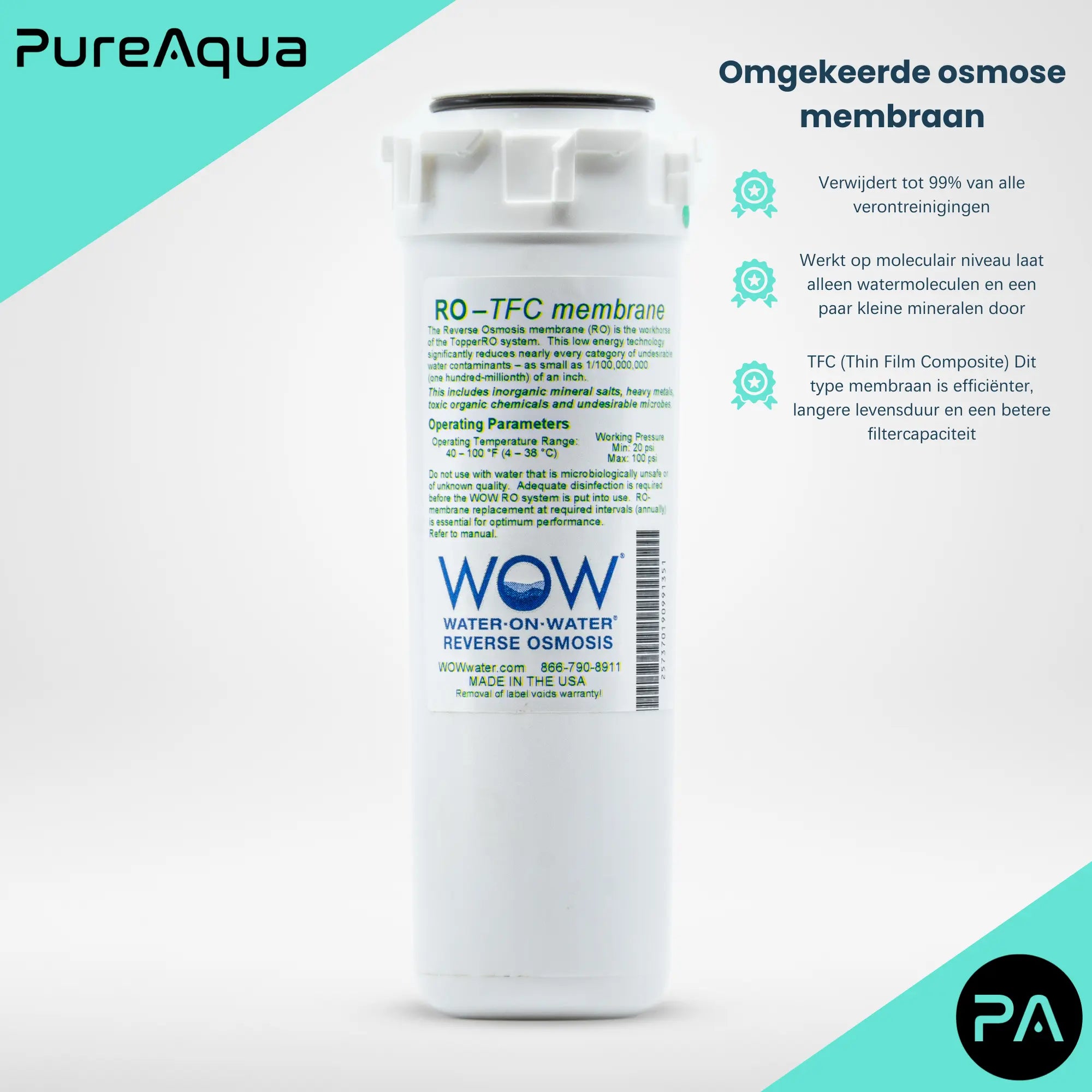
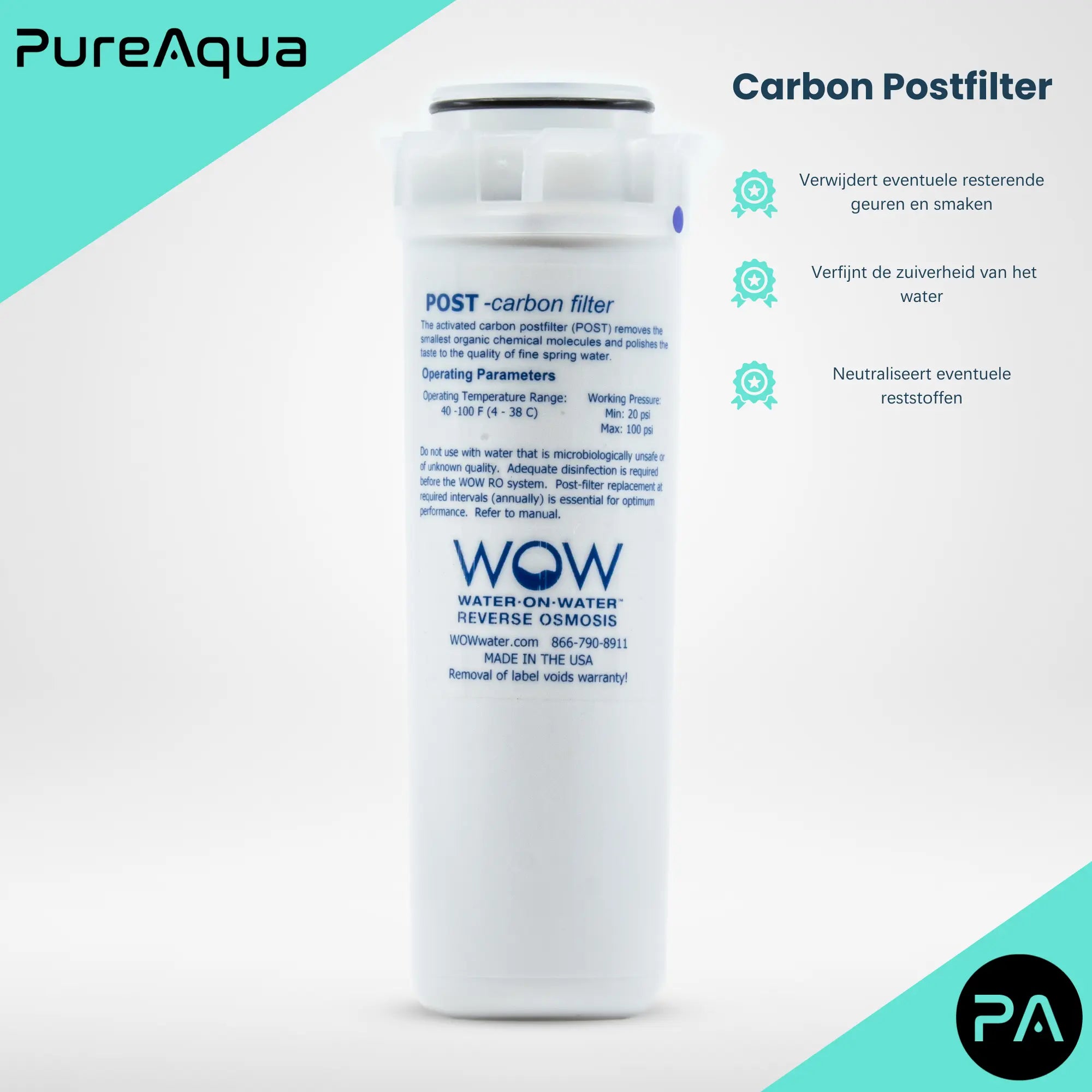

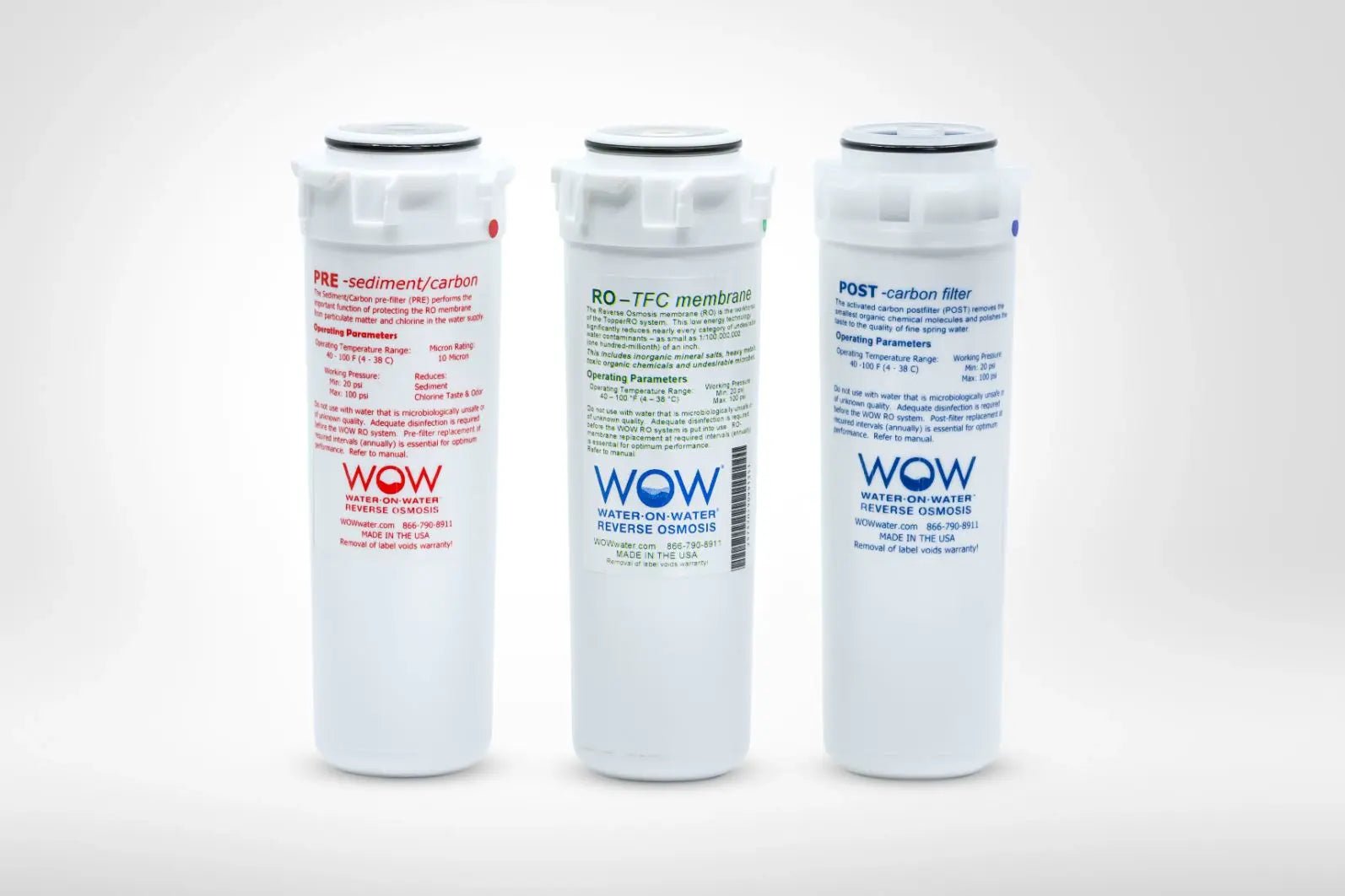
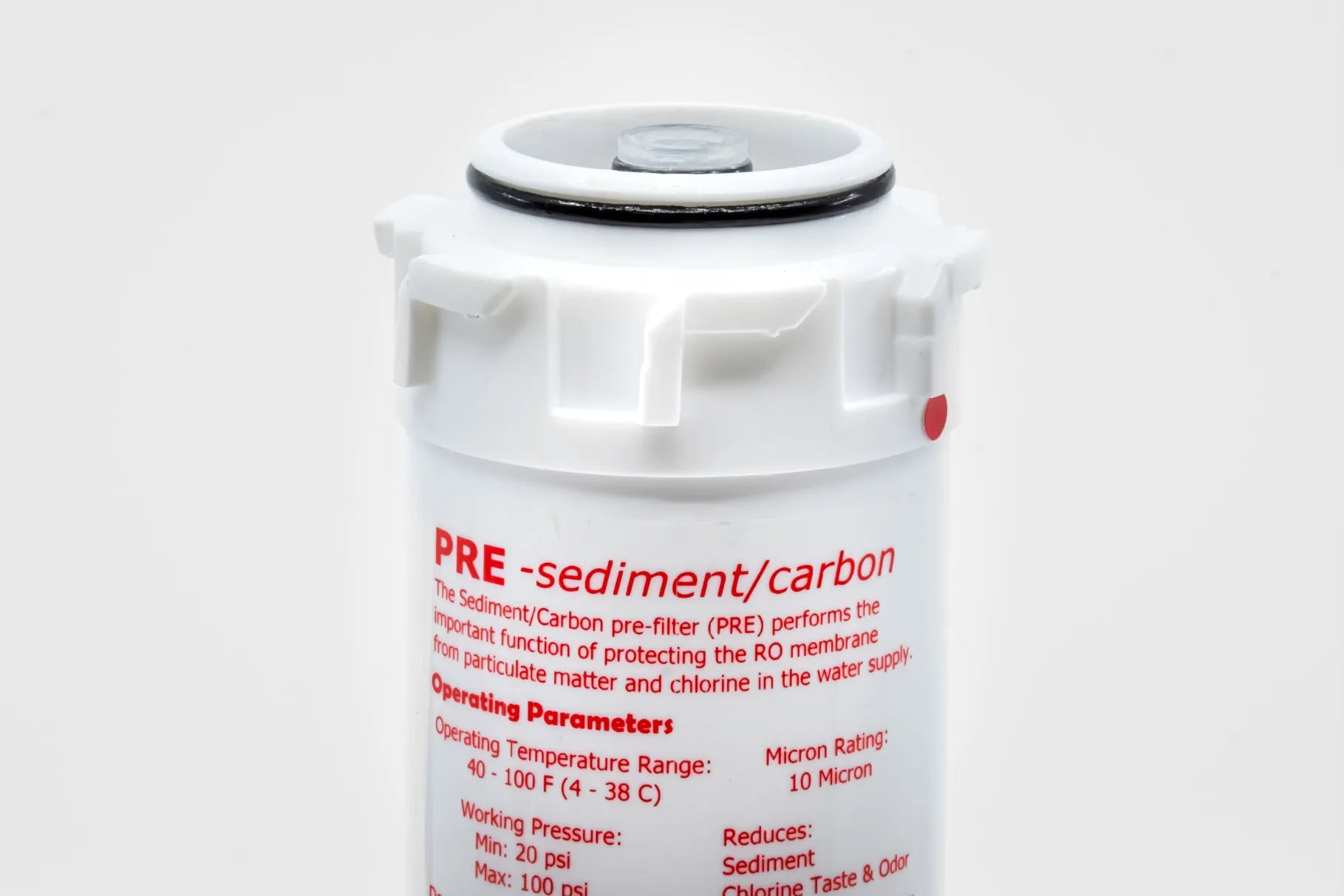
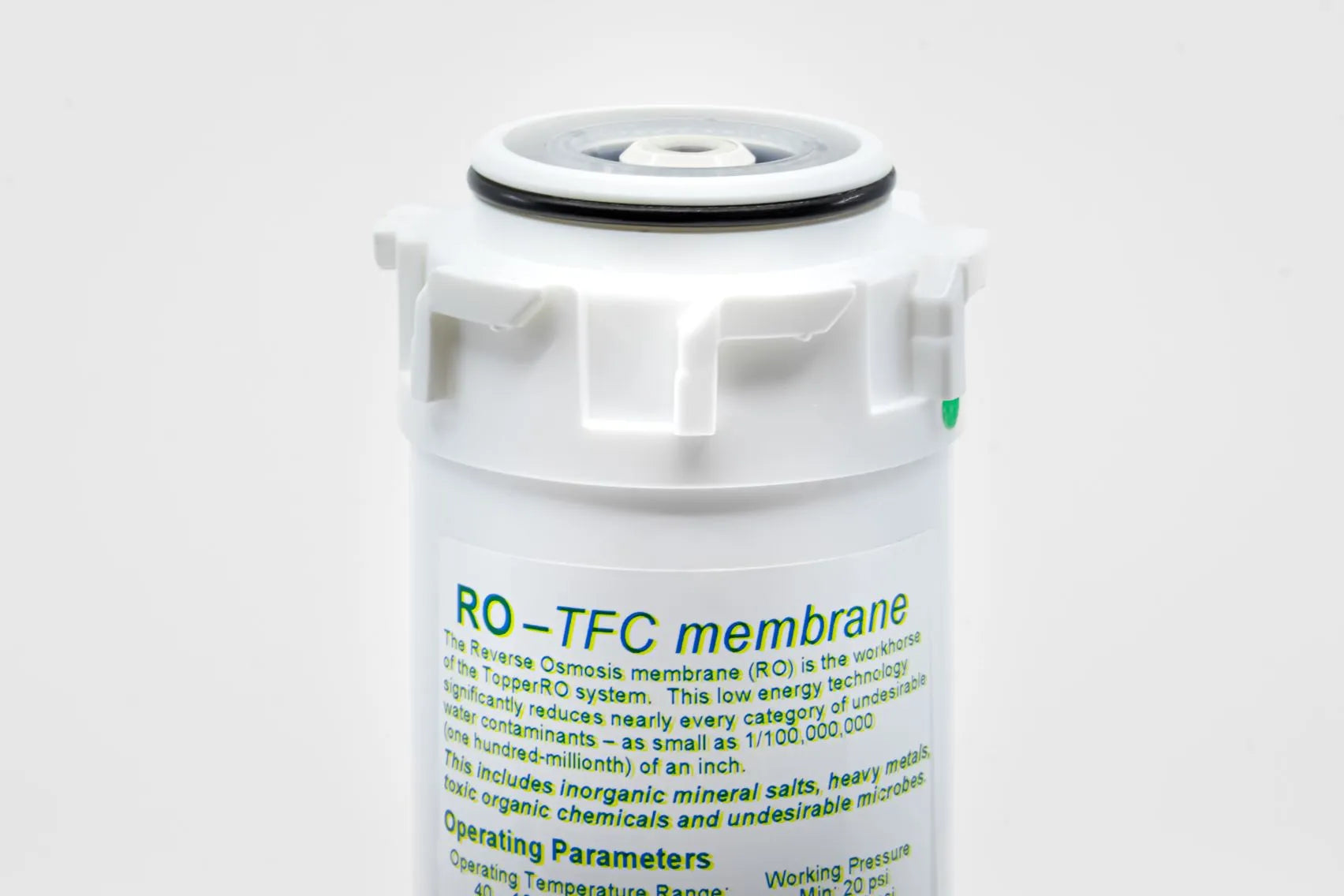

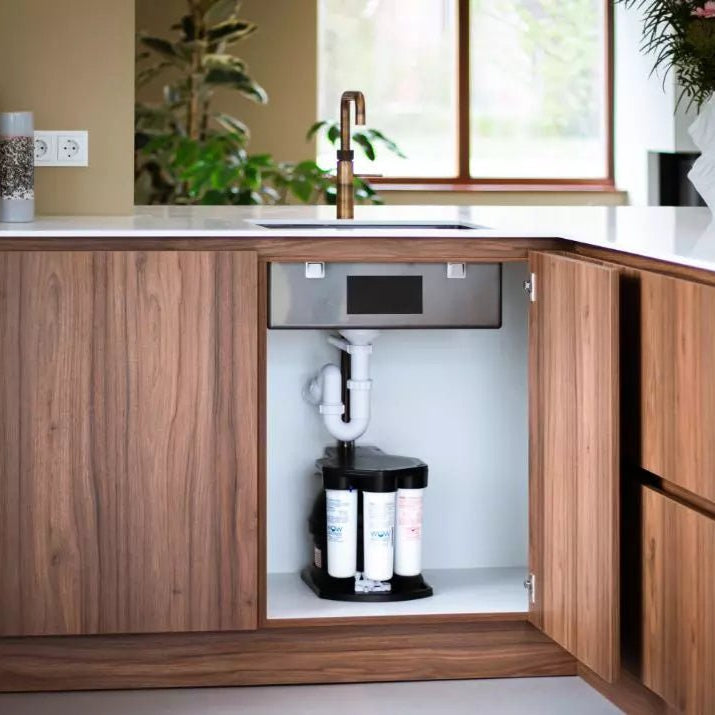
The Source 50 Filter Set (3-pack) for every 24 months
The Source is PureAqua's most sustainable and powerful water filtration system. Thanks to advanced reverse osmosis technology, it filters up to 99% of all impurities from tap water—from nanoplastics and PFAS to pharmaceutical residues, viruses, and metals.
Product description
Our filter set for The Source 50 consists of a Pre-, RO- and Post-filter that together ensure unparalleled purity of your drinking water.
The Pre-filter removes larger impurities such as sand, rust and sediments before the water enters the reverse osmosis process.
The RO filter is the heart of the system. This membrane filters at the molecular level, removing up to 99% of all dissolved solids, including heavy metals, PFAS, pesticides, bacteria, viruses, and pharmaceutical residues. This leaves only the purest water.
The Post-filter , consisting of high-quality activated carbon, provides the finishing touch: the water gets a fresh taste and smell, completely free of residues such as chlorine or other odour and taste-impairing substances.
This kit is specially designed to fit perfectly with your Source system and is easy to replace – for consistently pure water, every day.
The benefits of the Pre & Post filters
Optimal protection for your system
The Pre-filter prevents wear of your RO membrane by capturing coarse contaminants in time.
Perfect taste experience
The Post-filter provides a mild, fresh and neutral taste – spring water quality, straight from the tap.
Enjoy your system longer
Preventive filtering extends the life of all components, reducing costs and maintenance.
Easy replacement
Our filter set is designed for convenience: quick, clean and replaceable without any technical knowledge.
Fully recyclable
As you would expect from PureAqua: sustainable, without compromising on quality.
12 maanden gegarandeerd zuiver water
Met deze complete filterset ben je 12 maanden lang verzekerd van helder, schoon en lekker water. Vervang de set jaarlijks en je systeem blijft optimaal presteren, zonder gedoe.
Zorgeloos zuiver water
Met het Zorgeloos Zuiver Water abonnement hoef je nooit meer aan filters te denken. Je krijgt ieder jaar automatisch een complete nieuwe set thuisgestuurd, precies op tijd. Je bespaart ten opzichte van losse bestellingen én zolang je abonnement loopt, heb je garantie op je systeem. Nu tijdelijk met een luxe, door PureAqua gecertificeerde waterfles.
Eenvoudig zelf te vervangen
Complete set: pre, RO en mineralen

The Source 50 Filter Set (3-pack) for every 24 months
WAT KAN IK VERWACHTEN?
KIES JE FILTERSET
Je kiest een zuiver water kraan en ons waterfiltersysteem.
Liever eerst telefonisch contact? We kijken samen naar je situatie: huishouden, gebruik, keukenindeling, wensen voor de kraan.

Je kiest een zuiver water kraan en ons waterfiltersysteem.
Liever eerst telefonisch contact? We kijken samen naar je situatie: huishouden, gebruik, keukenindeling, wensen voor de kraan.

OFFERTE & BESTELLING
Op basis van je wensen maken we de bestelling in orde (zuiver water kraan + waterfiltersysteem + wel of geen installatie). We sturen het pakket naar je op zodat je alles snel in huis hebt (en de kraan kan bekijken).

AFSPRAAK INPLANNEN
We nemen contact met je op om een installatie moment naar jouw voorkeur af te spreken.
Meestal lukt dat binnen 2 weken.

INSTALLTIE IN JE KEUKEN
Onze monteur installeert de zuiver water kraan en het waterfiltersysteem netjes in je keukenkast.

EERSTE GLAS EN UITLEG
Je krijgt uitleg over het gebruik: welke hendel is gezuiverd water, hoe vul je flessen, etc.
We laten je ook direct zien hoe je eventueel zelf filters kunt vervangen.

ONDERHOUD & SERVICE
Filters vervang je 1 keer per jaar.
Je krijgt netjes een reminder en je kunt kiezen voor automatische levering.
Heb je vragen of problemen? Onze klantenservice en monteurs staan voor je klaar.







Frequently Asked Questions
What is the purpose of a drinking water filter system?
A drinking water filter system removes impurities such as dirt, bacteria, chemicals and other contaminants from tap water, giving you pure water to drink that is beneficial to your health.
How can I test the quality of my tap water?
You can measure the quality of your tap water with a TDS meter, which indicates the amount of dissolved solids in the water. PureAqua offers free TDS meters so you can check the purity of your drinking water yourself.
How does the 'The Source' drinking water filter system work?
The Source uses reverse osmosis technology. The water passes through multiple filtration stages, including an activated carbon filter and a semipermeable membrane, to remove up to 99% of unwanted substances.
Waarom is het mineraalfilter zo belangrijk?
Na de omgekeerde osmose is het water bijna helemaal “leeg”. Dat is heel zuiver, maar kan ook wat vlak smaken. Het mineraalfilter voegt daarom weer essentiële mineralen toe, zoals calcium en magnesium. Zo krijgt je water een zachte, natuurlijke smaak, voelt het voller in de mond en blijft de mineralenbalans beter op peil. Je drinkt dus extreem schoon water, maar dan wél met de voordelen van gezonde mineralen.
What is the quality of tap water in the Netherlands?
Although the Netherlands is known for its high-quality tap water, contaminants such as pharmaceutical residues and PFAS can still be present. Therefore, using a water filter system can help further purify drinking water.
What are the benefits of filtered tap water?
Filtered tap water tastes fresher, makes tea richer and fuller, and can even extend the life of household appliances by reducing limescale. Moreover, it contributes to a more sustainable lifestyle by reducing reliance on bottled water.
Heb je nog geen zuiver water kraan?
Deze filterset is speciaal ontwikkeld voor The Source 50. Heb je nog geen zuiver water kraan en waterfiltersysteem? Bekijk dan hier alle modellen.

Pre-filter (Pre-filter) – The first line of defense
Function:
The pre-filter is designed to remove coarse contaminants from the incoming tap water before it reaches the reverse osmosis (RO) membrane. This is essential for protecting the RO membrane's efficiency and longevity.
What is being filtered?
- Sediments : sand, rust, silt, dust particles
- Suspended solids : such as iron and manganese oxides
- Large organic molecules
- Chlorine and chlorine compounds (using activated carbon)
- Any flavour enhancing substances
The PureAqua Pre-filter combines a fine sediment filter with an activated carbon filter (often made from coconut fibers). This means the filter works both physically and chemically: it traps solids and absorbs chemical compounds that could affect the membrane or affect the taste.
Technical specifications:
- Filtration fineness : 5 micron
- Material : Pleated activated carbon / polypropylene
- Capacity : on average 6 to 12 months depending on water quality

Post-filter (After-filter) – The refinement
Functions:
The post-filter is used after the reverse osmosis process. At that point, the water is almost completely purified. The post-filter provides the final refinement, or polishing, of the water. It removes any traces of odors or flavors that remain after the RO phase and ensures a smooth and pleasant mouthfeel.
What is being filtered?
- Volatile organic compound (VOC) residues
- Any odor and taste residues (for example from chlorine or plastic pipes)
- Finer molecular contaminants
- Traces of chemicals that have passed through the membrane (e.g. THMs)
This post-filter consists of a high-density activated carbon block . The carbon is often produced from sustainable sources such as coconut shells, which aligns with PureAqua's sustainability mission.
Technical specifications:
- Material : Activated carbon (block/carbon mesh)
- Fineness : Submicron level (e.g. 0.5 – 1 micron depending on model)
- Taste optimization : Yes

RO Membrane (Reverse Osmosis) – The core of purification
Functions:
The RO membrane is the heart of the water purification system . This is where the most thorough purification takes place. Under pressure, the water is forced through an extremely fine membrane. Only pure H₂O molecules can pass through – virtually all other substances are left behind.
The RO membrane removes:
- Dissolved salts and minerals (TDS)
- Heavy metals
- Microorganisms such as bacteria and viruses
- Harmful chemicals and toxins
What is being filtered?
- Heavy metals (such as lead, chromium, copper, zinc)
- Nitrates & nitrites
- PFAS and other persistent chemicals
- Pesticides and herbicides
- Pharmaceutical residues (such as hormones or painkillers)
- Bacteria & viruses
- Dissolved salts and lime (hardness)
- Volatile organic compounds (partly)
Technical specifications:
- Material: Thin Film Composite (TFC, type AM-88)
- Pore size: < 0.0001 micron
- Capacity: 189–238 liters per day
- TDS reduction: Average 95.4%
- Certification: NSF/ANSI 58 (IAPMO)
